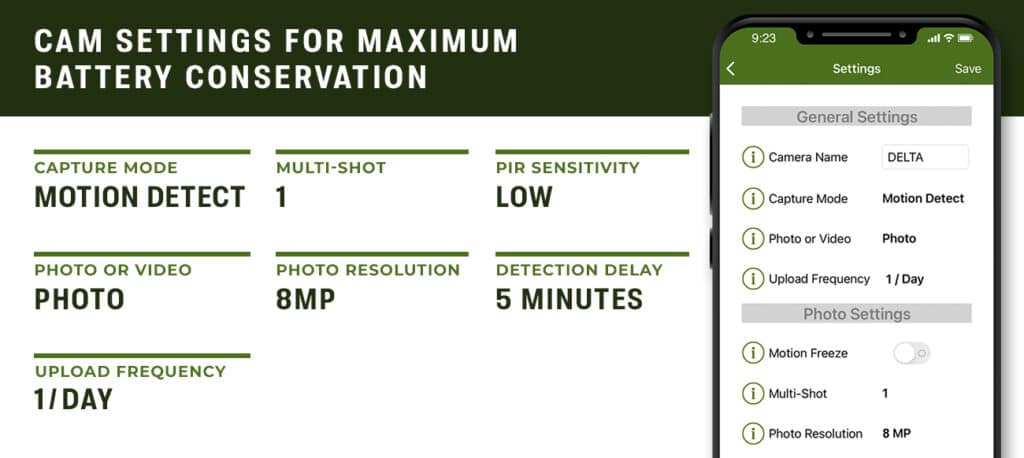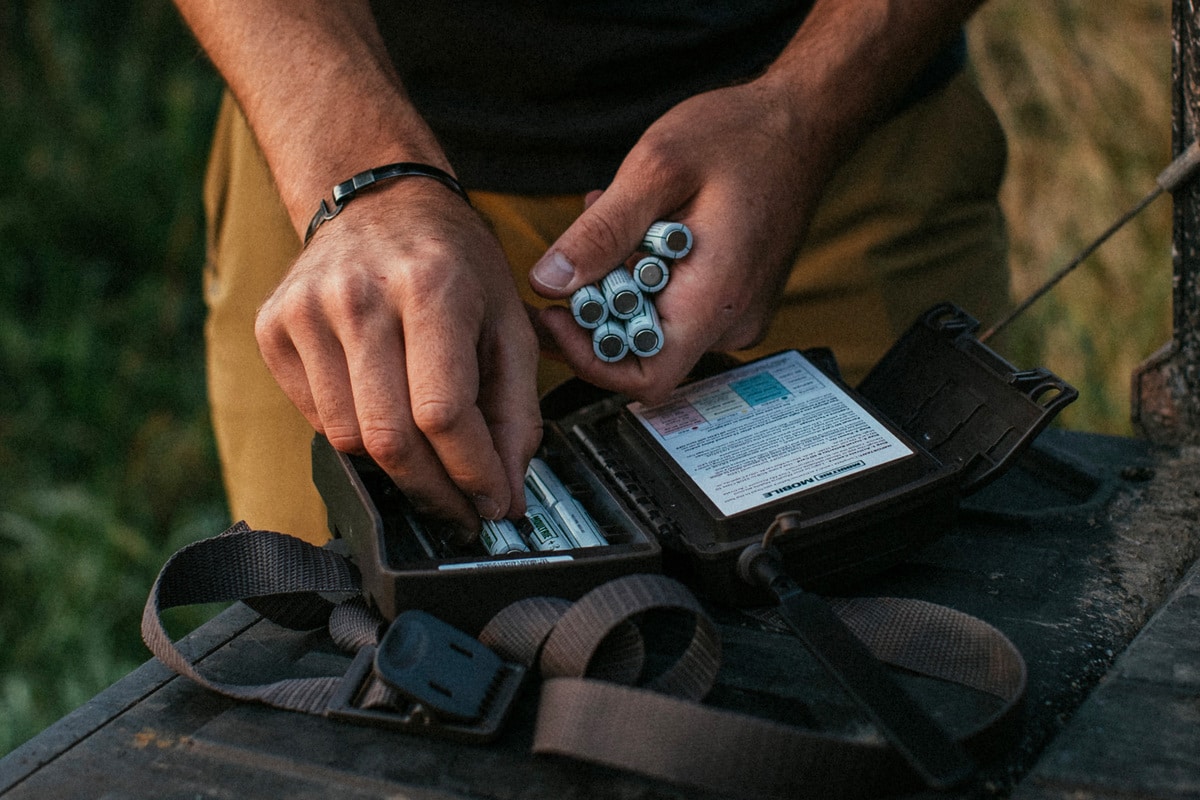Maximize Cellular Trail Camera Battery Life
Cellular trail cameras are a blast to run, and they are instrumental in getting up-to-the-minute scouting and security intel. However, if the batteries are running low or dying faster than normal, then you’re not getting the images and videos you need. The good news is, you can log into your Moultrie Mobile app and adjust a few settings to help increase the life of the batteries in your cellular game camera. If you’re interested in longer battery life, then we recommend these power-saving tips.
Battery Choice
The Delta requires 12 AA batteries to operate but Lithium or Alkaline? That is the question! For a longer, stronger battery life, we highly recommend lithium batteries for peak camera performance and enhanced nighttime images. Essentially, lithium batteries will maintain their peak strength for the entire life of the battery, whereas alkaline batteries begin declining immediately after they are installed. Through extensive in-house testing, Delta Cellular Cameras perform better when using Energizer® Lithium batteries.
Reduce Upload Frequency

One of the biggest power-consuming jobs that your cellular trail camera performs, is connecting to the server via cellular service. First, the camera powers on and sends a signal to begin communicating with the server. Once connected it then finds the newest images on the SD card and transmits them over the cellular network before powering down again. This process can take a minute or two, and it is using battery power the entire time.
That’s why we recommend setting your upload frequency to six times per day. Even though the camera will have to upload more images per transmission, that’s a relatively quick process that doesn’t burn a lot of battery power. It’s the actual connecting with the server that is using the most power, not the transmission of images. So, the more times your camera is connecting to the server, the more it is burning through battery power. This simple change can dramatically increase the life of your batteries while ensuring you continue getting images daily.
Video Mode
We all love videos. They reveal wildlife behavior and the direction they are going and coming. However, if conserving battery life is more important to you, then we recommend turning off video mode. Recording video is a major power consumer. The camera is on the entire time it’s recording, and if it’s nighttime, the flash is continuously running too — burning even more power. If your camera is watching over a feeder or food plot with lots of activity, then it won’t take long at all to burn through the batteries. Simply switch your camera to photo mode and you’ll instantly start saving on battery life.
Other Power-Saving Camera Settings
- Detection delay: Using this setting will reduce the many redundant images of does and raccoons feeding at your feeder and burning up your battery power. If your camera is in a high-traffic area, set this to one minute or longer.
- Don’t use burst mode: If your camera has a burst setting where it takes multiple images each time its triggered, set it to one photo only. This will again cut down on redundant images of the same deer feeding at a feeder.
- PIR Sensitivity: If you’re getting too many images of deer farther off, and would rather only see nice up-close shots, then lower the PIR sensitivity.
- Lower resolution images: Set your camera settings to record low-resolution images. If you don’t care about printing or cropping an image, then you might not need a high-res image. Your camera uses more battery power to write high-resolution files than lower-resolution images.
- Regularly format the SD card on 6000 & 7000 series cameras: Each time your 6000 or 7000 series camera connects with the server, it scans the SD card for newer images. The more images on the card, the longer it takes to scan through them, thus burning more battery power. Through the Moultrie Mobile app, format your SD card every one to two weeks to cut down on the images being scanned each time the camera checks in.
Get A Strong Signal
It’s always best to place your camera in an area that gets a strong cellular signal. The stronger the signal, the quicker the camera can perform its functions and the less power it will use. A poor cellular signal will drain batteries faster as it takes longer for images to upload to the server on a weaker signal.
Accessories
If you still want to run video mode and receive your images immediately while not worry about battery life, then you’re still in luck. Just make sure that you are running an external power source for your trail camera. Moultrie offers a 12-volt weather-resistant battery box in both a solar option and without, as well as a solar power panel. These external power sources can keep your camera running much longer in the field. If running a solar option, make sure it gets as much direct sunlight as possible to keep your camera running without worry.
If you follow these battery-saving tips and/or invest in an external power source, you can expect your cellular game camera to run maintenance free for a long time.


Featured
Juicy homemade jalapeno cheddar brats are perfect for grilling all summer long. They’re packed with all the right seasonings and fresh ingredients, making them extra tasty.

Featured
MeatEater and Moultrie Mobile join teams to bring hunters closer to nature.

Featured
These wild turkey skewers are tender and smothered in a homemade teriyaki glaze. Wild turkey sometimes gets a bad reputation for being a tough meat but when prepared properly using the steps in this recipe, the results are amazing.



